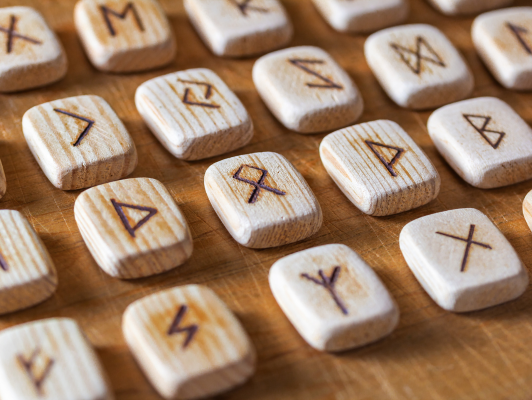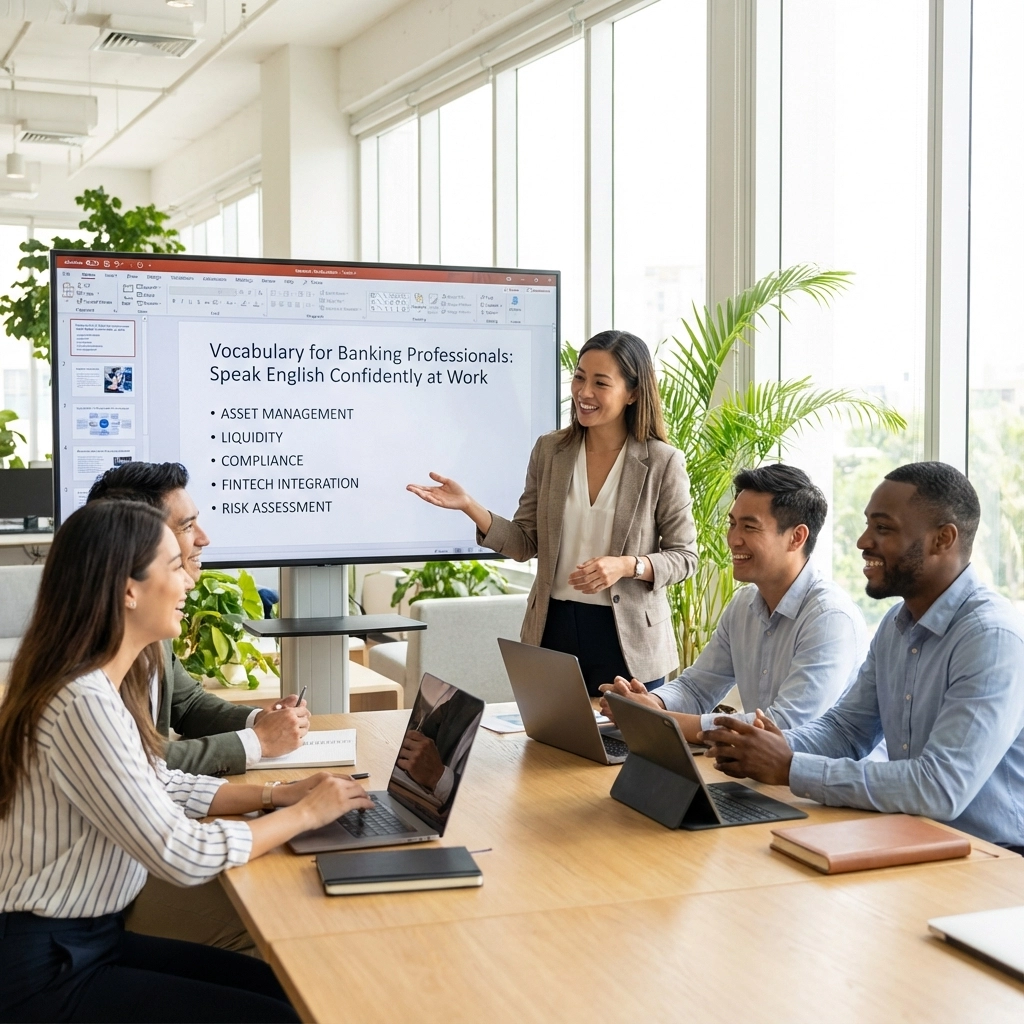Contents
Toggle
Meet David De’ Ath, founder, editor, and writer at Wonderful World English. With his extensive background as an English teacher, David provides valuable insights and practical tips on ESL for students and teachers alike.
English is the most spoken and studied language on planet Earth.
It continues to echo in the realms of finance, education, travel, and entertainment!
But it didn’t just appear out of nowhere.
Old English (or Anglo-Saxon) is the ancestral form of the modern English tongue and was spoken in England and southern Scotland from the 5th to 11th centuries.
Learning Old English can be an incredibly enriching experience for language enthusiasts, historical linguistics students, or people fascinated by medieval culture.
Discover Old English, the ancient language of medieval England. Start with a good textbook and online resources, learn its unique alphabet and pronunciation, grasp complex grammar, and build vocabulary. Practice through reading, translation, and listening exercises. Join study groups for motivation and delve into scholarly research for deeper understanding.
This guide provides a clear, step-by-step approach to mastering Old English.
Whether you are a linguistic enthusiast, lover of history, or simply looking to show off to your friends, you’re in the right place!
Let’s delve into the steps necessary to help anyone learn and master Old English once and for all!

Mastering Old English
Old English, an early form of the English language, stands apart from our modern version.
It’s characterized by a unique set of grammatical rules, an extensive and distinct vocabulary, and a pronunciation system that might seem foreign to contemporary ears.
This language flourished in England and parts of Scotland from the 5th to the 11th century and is a vibrant link to the medieval world as well as a linguistic relic.
Its linguistic roots are deeply intertwined with Old Frisian, a language spoken in parts of the Netherlands and Germany, reflecting historical connections across the North Sea.
Moreover, Old English shares notable similarities with Old Norse, the language of the Vikings, hinting at the cultural and linguistic exchanges that occurred through Viking invasions and settlements.
Learning Old English opens a window to a time of epic tales, rich poetry, and the early formation of English culture and identity.
It’s a gateway to understanding how the English language has evolved, shedding light on the origins of many words and grammatical structures we use today.
Delving into Old English not only enriches one’s linguistic skills but also deepens appreciation for the historical and cultural journey of the English-speaking world.
1. Key Resources for Learning
As with any language, learning Old English will require arming yourself with the right educational resources.
A foundational step is selecting a complete textbook.
“A Guide to Old English” by Bruce Mitchell and Fred C. Robinson is highly recommended for its in-depth coverage and user-friendly approach.
This book serves as a solid base, offering structured lessons, examples, and insights into the language’s structure and usage.
Complementing traditional study materials, the online world offers a plethora of resources.
Online platforms, especially interactive websites like Old English Aerobics, are invaluable for supplementing your learning.
Sites like this typically provide a variety of exercises, ranging from basic vocabulary drills to more advanced sentence construction and translation challenges.
These online resources also often come with community support, where learners can interact with each other, share insights, and even resolve doubts.
This blend of traditional and modern learning tools creates a comprehensive and versatile learning environment, catering to different learning styles and paces.
By making the most of textbooks and online exercises, learners can develop a more complete understanding of Old English, making the learning process both effective and enjoyable.
Click the image below to check out “A Guide to Old English” on Amazon.

2. Alphabet and Pronunciation
A foundational aspect of d Old English is acquainting yourself with its distinct alphabet.
This early stage of learning is crucial, as Old English contains characters unfamiliar to modern English speakers, such as þ (thorn) and ð (eth), each representing different ‘th’ sounds.
These unique characters are not just symbols but keys to unlocking the authentic pronunciation and rhythm of the language.
Grasping the correct pronunciation of these letters and the overall phonetic system of Old English is vital for a deeper comprehension of the language.
Pronunciation in Old English is not just about sounding words correctly; it’s about capturing the language’s true spirit and understanding how it flowed and resonated in its historical context.
Mastering pronunciation aids in appreciating the poetic and oral traditions of the Anglo-Saxon era, where rhythm, alliteration, and sound patterns played significant roles.
Whether reading ancient manuscripts or reciting epic poems, the ability to pronounce Old English authentically enriches the learning experience, bringing you closer to the mindset and culture of the early medieval period.
For learners, this means memorizing the alphabet and practicing the sounds through listening exercises, spoken drills, and perhaps even engaging in recitations of Old English texts.
This holistic approach to learning the alphabet and pronunciation forms a solid foundation for further exploration into Old English’s rich and complex world.
Modern English is spoken all around the world, not least in the continent where it all began: Europe.
Check out the list guide below to learn the most English proficient countries within the EU!
Related Article: English-Speaking Countries in the EU – Top 10

3. Grammar Essentials
Delving into the grammar of Old English reveals a system far more intricate than what we encounter in modern English.
It features a complex array of verb conjugations and a diverse set of noun cases, each with its own rules and nuances.
The verbs in Old English change forms based on tense and vary according to mood and voice, presenting a detailed picture of action and intention.
Noun cases, including nominative, accusative, genitive, and dative, define the role of nouns in sentences, offering clues about relationships and meanings within the text.
This complexity, though challenging, is also what makes learning Old English grammar a fascinating journey.
It offers insights into the linguistic structure of the past and how it shaped communication and expression in the Anglo-Saxon world.
Understanding these grammatical intricacies is key to fully appreciating the nuances of Old English literature and historical documents.
Given the depth and breadth of Old English grammar, a strategic approach to learning is to tackle one aspect at a time.
This methodical approach allows learners to build a solid foundation, gradually layering on more complex elements.
It also reduces the risk of feeling overwhelmed and ensures a thorough understanding of each grammatical component.
For instance, starting with verb conjugations might involve learning the basic forms of strong and weak verbs, then progressively moving on to more complex tenses and moods.
Similarly, with noun cases, learners can begin by understanding the role of each case in sentence structure before delving into the specifics of declension patterns.
By breaking down the grammar into manageable segments, learners can more effectively absorb and apply the rules of Old English, paving the way for advanced study and a deeper appreciation of the language’s rich heritage.
We found the video below to be an excellent resource for grasping the basics of Old English grammar:
4. Vocabulary Building
Building a strong vocabulary is a vital part of learning Old English.
The process begins with familiarizing yourself with basic words and phrases, which lay the groundwork for more advanced language skills.
Starting with simple, commonly used words allows learners to quickly start understanding basic texts and engage with the language in a practical way.
This foundation is essential for gaining confidence and momentum in the early stages of language acquisition.
Gradually introducing more complex and less common words as learners progress enriches their understanding and allows them to delve deeper into sophisticated texts and historical documents.
This step-by-step approach to vocabulary building ensures a solid and thorough grasp of Old English, making the learning process both effective and satisfying.
Modern tools like flashcards and language-learning apps play a crucial role in this endeavor.
Flashcards, a time-tested method, are excellent for memorization and can be easily customized to suit individual learning needs.
They offer a simple yet effective way to practice and reinforce new words, aiding in long-term retention.
Language apps, on the other hand, bring the advantage of interactive learning experiences.
They often include games, quizzes, and spaced repetition systems, making learning new vocabulary more engaging and effective.
These apps can also provide contextual examples and pronunciation guides, which are crucial for understanding how words fit into sentences and practicing pronunciation.
Furthermore, many of these digital tools offer the flexibility to learn on the go, allowing learners to seamlessly incorporate language study into their daily routines.
Whether through traditional flashcards or innovative language apps, consistently expanding and reinforcing your Old English vocabulary is key to becoming proficient in this ancient and fascinating language.
For some insights into how you can learn multiple languages at once, the guide below is for you!
Related Article: How to Learn Multiple Languages – Ultimate Guide

6. Reading and Translation Practice
Starting your exploration of Old English texts with more straightforward materials like the ‘Anglo-Saxon Chronicle‘ is an excellent strategy.
With its relatively straightforward language and style, this chronicle serves as an accessible entry point for beginners.
It familiarizes learners with basic vocabulary and sentence structures, easing them into the complexities of Old English literature.
As proficiency grows, transitioning to more intricate works such as ‘Beowulf’ offers a deeper immersion into the language.
‘Beowulf,’ known for its rich narrative and poetic complexity, challenges learners to stretch their understanding and appreciation of Old English.
Engaging with such texts exposes one to the beauty and depth of the language, enhancing both linguistic and cultural comprehension.
Regular translation exercises are crucial in solidifying your learning in conjunction with reading.
Translating sentences or passages from Old English to modern English and vice versa allows learners to apply their knowledge actively.
This practice helps internalize grammar rules, expand vocabulary, and develop a sense of the language’s rhythm and style.
Translation is a cognitive process that involves interpretation, analysis, and creativity.
It encourages learners to think critically about the meanings and nuances of words and phrases, deepening their overall understanding of the language.
Regular practice of translation hones these skills, bridging the gap between passive reading and active language use.
These exercises also offer insights into the historical and cultural contexts of the texts and provide a richer, more rounded learning experience.
Click the image below for a link to ‘The Anglo-Saxon Chronicle’ on Amazon.

7. Auditory Learning
Incorporating listening exercises into your Old English study routine is vital to mastering the language.
Engaging with audio resources or recorded texts brings several key benefits, particularly in the areas of pronunciation and rhythm.
Listening to Old English being spoken or read aloud allows learners to hear and internalize the distinct sounds and intonations of the language.
This auditory exposure is crucial for developing correct and natural pronunciation, a difficult skill to acquire through text-based learning alone.
With its rich oral tradition, Old English is a language where rhythm and cadence play important roles.
By listening to recordings, learners get a sense of the poetic flow and musicality inherent in the language.
This enhances the enjoyment of the literature and deepens understanding, as rhythm often contributes to meaning in Old English texts.
Hearing the language spoken can aid in memorization and recall, as the auditory element adds another layer to the learning process.
For learners who might not have access to native speakers or classroom settings, audio resources serve as invaluable tools for self-study.
They offer the opportunity to experience the language as it might have sounded centuries ago, connecting the learner to the words on the page and the voice of a bygone era.
From materials on platforms like YouTube to audiobooks, be sure to start listening to Old English to really take your learning to the next level.
Check out the video below for a brief introduction to the famous Old English story of Beowulf in the language it was written:
8. Community Engagement
Joining study groups or becoming part of online communities focused on Old English can significantly enhance your learning journey.
These platforms offer more than just academic support; they provide a sense of camaraderie and shared purpose that can be incredibly motivating.
Being part of a study group or online community allows learners to exchange ideas, share resources, and discuss challenges.
This collaborative environment forges a deeper understanding as members learn from each other’s perspectives and insights.
It’s not uncommon for more experienced members to share tips or explanations that can clarify complex concepts or offer new angles on difficult topics.
On top of this, these communities can be a source of encouragement and inspiration.
Learning an ancient language like Old English can sometimes feel isolating, especially for self-learners.
Community engagement breaks this isolation, providing a supportive network of fellow enthusiasts.
Celebrating milestones together or working through difficulties with the support of peers makes the learning process more enjoyable and less daunting.
Online forums, social media groups, or virtual meet-ups also offer flexibility and accessibility, allowing people from different geographical locations to connect and engage over their shared interest in Old English.
This global connection can bring an array of perspectives to the study of Old English, enriching the learning experience.

9. Advanced Learning through Academic Research
Exploring academic works and scholarly articles on Old English can be immensely rewarding for learners eager to delve beyond basic proficiency.
This advanced stage of learning opens up new dimensions of the language, offering extensive insights into its historical, cultural, and literary contexts.
Academic research in Old English encompasses a broad range of topics.
Scholars analyze linguistic structures, trace the evolution of the language, and explore its connections with other languages.
They also examine literary works, delving into themes, styles, and the socio-cultural influences reflected in the texts.
This deep dive into scholarly works enriches one’s understanding of Old English not just as a language but as a window into the life and thoughts of its speakers.
Reading academic articles and research papers allows learners to engage with the latest theories and discoveries in the field.
It provides an opportunity to see how contemporary scholars approach Old English, from decoding manuscripts to interpreting historical events through the lens of the language.
This can inspire new perspectives and encourage critical thinking about the language and its literature.
Academic research also often highlights the nuances and complexities that may not be evident in initial language study.
For instance, understanding the subtleties of Old English poetry, its use of metaphor, and alliteration requires a grasp of the language and an appreciation of its artistic and historical significance.
ChatGPT is an excellent tool to help with language learning.
Check out the link below to learn more about how to learn English using ChatGPT and try to apply the same to Old English!
Related Article: ChatGPT & English Learning: A Teacher’s Guide

10. Consistent Practice
Like mastering any language, proficiency in Old English hinges on consistent and regular practice.
The key to truly understanding and retaining this ancient language lies in making it a part of your daily life, allowing for continual engagement and reinforcement of skills learned.
Incorporating Old English into your routine doesn’t have to be overwhelming.
It could be as simple as dedicating a few minutes each day to reviewing vocabulary, reading a paragraph from an Old English text, or listening to a recording.
These small, regular sessions can significantly enhance retention and understanding, as frequent exposure helps solidify the language in your memory.
Practicing consistently also aids in maintaining steady progress.
Language learning is cumulative, and regular engagement ensures that new information builds upon what has already been learned.
This steady progression is crucial in a language like Old English, where the initial learning curve can be steep due to its unique grammar and vocabulary.
Another benefit of daily practice is developing a deeper connection with the language.
Over time, you begin to think in Old English, understanding its nuances and rhythms more intuitively.
This immersion is crucial for moving beyond basic comprehension to a more profound appreciation of the language’s literary and historical richness.

Conclusion
The quest to learn Old English transcends mere language acquisition; it explores a pivotal chapter of linguistic history.
This ancient tongue, rich in history and culture, provides a unique lens through which we can view and understand the origins of modern English and the early medieval European world.
Embarking on this journey requires patience and dedication.
The complexities of Old English, with its distinct grammar, pronunciation, and vocabulary, present challenges that demand perseverance.
However, the rewards of this endeavor are manifold.
Through regular practice and engagement with the language, its texts, and its scholarly study, you gradually unlock the secrets held within its words and structures.
As you delve into this ancient language, you discover the treasures of a bygone era and gain a new appreciation for the intricacies and beauty of language as a whole.
We hope you find value in this guide.
Have a wonderful day!
Image Attribution: All images licensed via canva.com





